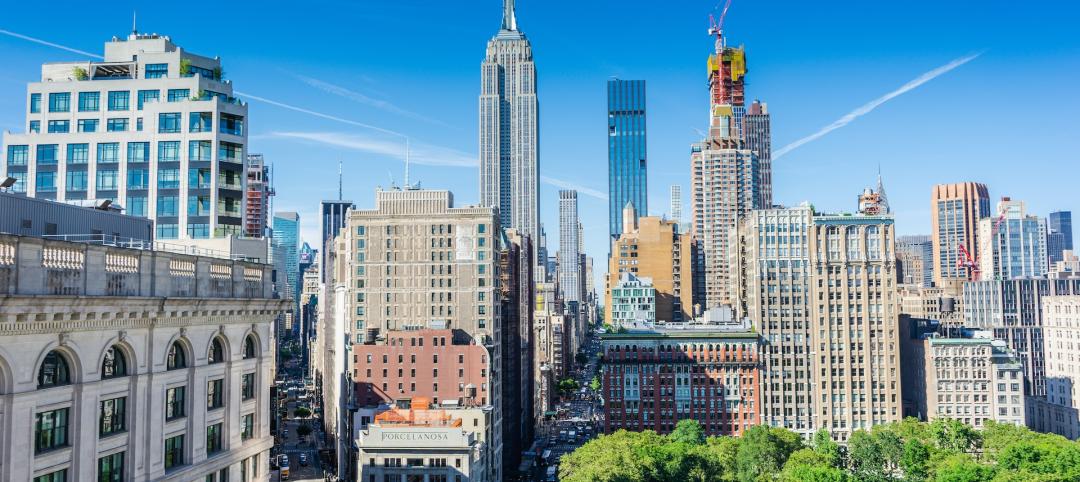|
Washington, D.C. — With millions of sports fans visiting LEED-certified green sports venues every year, the U.S. Green Building Council (USGBC) is proud to announce a collaboration with the Green Sports Alliance, a prominent nonprofit organization supporting the development and promotion of green building initiatives in professional and collegiate sports.
USGBC will support the Alliance to accelerate the green sports movement by exploring LEED certification of sports stadiums across the country. Currently, 25 professional sports venues are LEED-certified, including Nationals Park, American Airlines Arena and Soldier Field to name a few. The partnership will also explore additional engagement opportunities such as USGBC’s Green Apple Day of Service, a day for people across the globe to participate in green school service projects. “Sports fans stepping into LEED-certified arenas, stadiums, ballparks and more experience the benefits of green building firsthand with water conservation, energy efficiency and responsible waste management,” said Rhiannon Jacobsen, director of strategic accounts, USGBC. “It was a natural fit for USGBC to partner with the Green Sports Alliance, which is dedicated to making professional sports healthier and more sustainable.” “The Green Sports Alliance consists of over 180 professional and collegiate sports teams and venues, all looking to enhance their operations and environmental performance,” said Martin Tull, executive director, Green Sports Alliance. “Partnering with the USGBC will help us provide valuable resources and guidance to our members as they work to employ and promote green building initiatives at their respective venues.” USGBC and the Alliance have jointly developed a toolkit focused on advancing green schools through sports, which encourages sports organizations to engage their communities in environmental stewardship through local projects. The Alliance highlights USGBC initiatives at professional and collegiate sports venues through member resources including webinars, toolkits, best practice sharing and social media events. USGBC first collaborated with the Alliance last August when the Seattle Mariners, Seahawks, Sounders and Storm collaborated on a school garden project for the inaugural Green Apple Day of Service. 2013 Green Apple Day of Service projects are currently being planned by sports teams in cities such as San Francisco, Kansas City, Seattle and Philadelphia, host of USGBC’s 2013Greenbuild Conference and Expo in November, where the Alliance will have a presence in the Center for Green Schools booth. To continue engaging the sports industry around its programs, USGBC will be joining the Green Sports Alliance at the 2013 Green Sports Alliance Summit in NYC, August 26-28. ###
|
About the U.S. Green Building CouncilThe U.S. Green Building Council (USGBC) is committed to a prosperous and sustainable future through cost-efficient and energy-saving green buildings. USGBC works toward its mission of market transformation through its LEED green building program, robust educational offerings, a nationwide network of chapters and affiliates, the annual Greenbuild International Conference & Expo, the Center for Green Schools, and advocacy in support of public policy that encourages and enables green buildings and communities. For more information, visit www.usgbc.org. |
About LEEDAs the most widely recognized and widely used green building program across the globe, LEED is transforming buildings, homes and communities in all 50 states and 135 countries. LEED guides the design, construction, operations and maintenance of more than 50,000 projects worldwide, comprising 9.8 billion square feet of commercial and institutional construction space, and more than 134,000 additional residential units. By using less energy, LEED-certified spaces save money for families, businesses and taxpayers; reduce carbon emissions; and contribute to a healthier environment for residents, workers and the larger community. Learn more at usgbc.org/leed. |
Related Stories
Resiliency | Apr 4, 2023
New bill would limit housing sprawl in fire- and flood-prone areas of California
A new bill in the California Assembly would limit housing sprawl in fire- and flood-prone areas across the state. For the last several decades, new housing has spread to more remote areas of the Golden State.
Sustainability | Apr 4, 2023
ASHRAE releases Building Performance Standards Guide
Building Performance Standards (BPS): A Technical Resource Guide was created to provide a technical basis for policymakers, building owners, practitioners and other stakeholders interested in developing and implementing a BPS policy. The publication is the first in a series of seven guidebooks by ASHRAE on building decarbonization.
Sustainability | Apr 4, 2023
NIBS report: Decarbonizing the U.S. building sector will require massive, coordinated effort
Decarbonizing the building sector will require a massive, strategic, and coordinated effort by the public and private sectors, according to a report by the National Institute of Building Sciences (NIBS).
Education Facilities | Apr 3, 2023
Oklahoma’s Francis Tuttle Technology Center opens academic center for affordable education and training
Oklahoma’s Francis Tuttle Technology Center, which provides career-specific training to adults and high school students, has completed its Francis Tuttle Danforth Campus—a two-story, 155,000-sf academic building. The project aims to fill the growing community’s rising demand for affordable education and training.
Sports and Recreational Facilities | Mar 30, 2023
New University of St. Thomas sports arena will support school's move to Division I athletics
The University of St. Thomas in Saint Paul, Minn., last year became the first Division III institution in the modern NCAA to transition directly to Division I. Plans for a new multipurpose sports arena on campus will support that move.
Healthcare Facilities | Mar 26, 2023
UC Davis Health opens new eye institute building for eye care, research, and training
UC Davis Health recently marked the opening of the new Ernest E. Tschannen Eye Institute Building and the expansion of the Ambulatory Care Center (ACC). Located in Sacramento, Calif., the Eye Center provides eye care, vision research, and training for specialists and investigators. With the new building, the Eye Center’s vision scientists can increase capacity for clinical trials by 50%.
Libraries | Mar 26, 2023
An abandoned T.J. Maxx is transformed into a new public library in Cincinnati
What was once an abandoned T.J. Maxx store in a shopping center is now a vibrant, inviting public library. The Cincinnati & Hamilton County Public Library (CHPL) has transformed the ghost store into the new Deer Park Library, designed by GBBN.
Multifamily Housing | Mar 24, 2023
Momentum building for green retrofits in New York City co-ops, condos
Many New York City co-op and condo boards had been resistant to the idea of approving green retrofits and energy-efficiency upgrades, but that reluctance might be in retreat.
Legislation | Mar 24, 2023
New York lawmakers set sights on unsafe lithium-ion batteries used in electric bikes and scooters
Lawmakers in New York City and statewide have moved to quell the growing number of fires caused by lithium-ion batteries used in electric bikes and scooters.
Multifamily Housing | Mar 24, 2023
Multifamily developers offering new car-free projects in car-centric cities
Cities in the South and Southwest have eased zoning rules with parking space mandates in recent years to allow developers to build new housing with less parking.

















